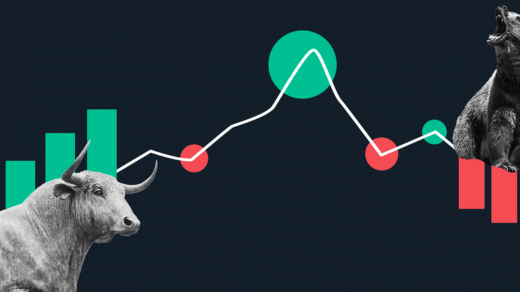Certainly, here are 15 points discussing the pros and 15 points discussing the cons of using Elliott Wave Theory as a tool for predicting market trends:
Elliott Wave Theory – Pros:
- Pattern Recognition: Elliott Wave Theory helps traders recognize repetitive price patterns in financial markets.
- Market Psychology: The theory incorporates market psychology, reflecting the sentiment of traders.
- Trend Identification: It assists in identifying and labeling trends, corrections, and consolidation phases.
- Objective Analysis: Elliott Wave analysis provides a systematic and objective approach to market analysis.
- Long-Term Perspective: It offers a long-term perspective, helping traders see the bigger picture.
- Wave Counting: Traders can use wave counting to estimate future price targets and reversal points.
- Price Projections: The theory provides guidelines for projecting future price movements.
- Risk Management: It can aid in setting stop-loss levels and managing risk effectively.
- Support and Resistance: Elliott Waves help identify potential support and resistance levels.
- Confirmation: When combined with other technical analysis tools, it can confirm trading signals.
- Time Frame Flexibility: Elliott Wave analysis can be applied to various timeframes, from intraday to long-term.
- Historical Significance: Elliott Wave Theory has been used for decades and has a historical track record.
- Community Resources: There are online communities and resources for learning and discussing Elliott Wave analysis.
- Adaptability: Traders can adapt Elliott Wave principles to various asset classes, including stocks, forex, and cryptocurrencies.
- Educational Value: Studying Elliott Wave Theory enhances traders’ understanding of market dynamics.
Elliott Wave Theory – Cons:
- Subjectivity: Elliott Wave interpretation can be highly subjective, leading to different wave counts among analysts.
- Complexity: The theory involves intricate wave patterns, making it challenging for beginners.
- Open to Interpretation: Different analysts may identify different wave patterns and counts in the same chart.
- Time-Consuming: Accurate Elliott Wave analysis can be time-consuming, delaying trading decisions.
- Limited Predictive Power: It may not always accurately predict future market movements.
- Noisy Markets: Elliott Waves can be challenging to apply in noisy or choppy markets.
- False Signals: Like any technical analysis tool, Elliott Waves can produce false signals.
- Risk of Overfitting: Traders may over-optimize wave counts to fit historical data, leading to poor performance in live markets.
- Emotional Biases: Traders may become emotionally attached to their wave counts, affecting decision-making.
- Conflict with Other Analysis: Elliott Wave analysis may conflict with other technical or fundamental analysis methods.
- No Set Rules: There are no strict rules for identifying and labeling waves, leading to varying interpretations.
- Lack of Historical Data: For newer assets or markets, historical data may be limited, making analysis challenging.
- Late Confirmation: Confirming an Elliott Wave pattern may occur after a significant portion of a move has already happened.
- Complex Corrections: Corrective waves can be complex and challenging to interpret accurately.
- Market Unpredictability: Unforeseen events and external factors can disrupt Elliott Wave patterns.
In conclusion, Elliott Wave Theory can be a valuable tool for traders seeking to analyze market trends and sentiment. However, it comes with inherent challenges, such as subjectivity, complexity, and the potential for false signals. Traders should use Elliott Wave analysis as part of a comprehensive trading strategy and combine it with other technical and fundamental analysis methods for more robust decision-making. Additionally, gaining experience and expertise in Elliott Wave analysis is crucial for its effective application in trading.





